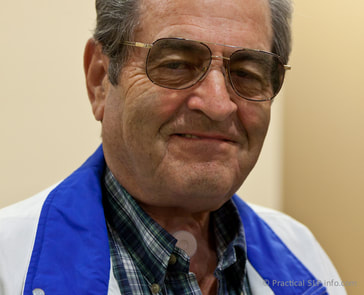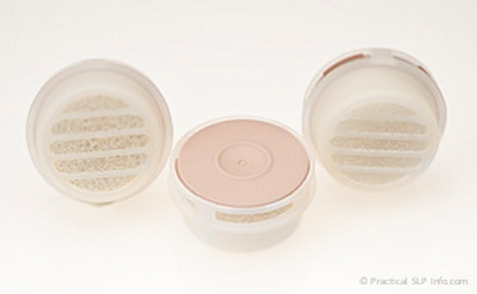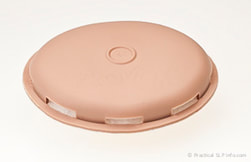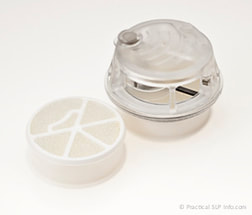The acronym HME is short for: “Heat and Moisture Exchange.”
These small cassettes are positioned over the stoma and designed to have all the air you breath pass through them, -both inhaled air and exhaled air.
For more information about FreeHands HME, which is an HME for hands free speech, click here.
These small cassettes are positioned over the stoma and designed to have all the air you breath pass through them, -both inhaled air and exhaled air.
For more information about FreeHands HME, which is an HME for hands free speech, click here.
It is very important you use an HME as it is described to you. The video below will help to explain why the HME is important in your rehabilitation.
Although your throat has been drastically changed through the laryngectomy surgery, your lungs have also had quite a transition from being disconnected from your upper respiratory tract. Being a neck breather changes the dynamics and physiology of how you breathe. Through the use of an HME, the lungs are receiving air more similar to when you were breathing through your nose. This is especially important in preventing mucous crusting and plugging as well as to ensure your secretions are well managed.
We are designed to breathe humidified air. Prior to the laryngectomy, the air you were breathing was moistened by passing through the humid passages of the nose and throat. The laryngectomy surgery, however, disconnects the upper airway passages from your lungs and all the air you breathe now enters your lungs through the neck. As a result, this air no longer has the benefit of first receiving humidification or warmth before entering the lungs. This drier air serves to thicken secretions, contribute to crusting in the airway and can also stop the lungs’ natural ability to move secretions out.
By using an HME, you are helping to restore much of what the nasal passages used to do for humidifying and heating the air you inhaled. When in place, the HME cassette will trap the moist and warm air you exhale (think of fogging a mirror with your breath). The foam inside the cassette is treated with a special salt that is designed to retain moisture in the humid air you exhale, as it passes through the HME. It will also capture the warmth of the air you exhale. Then, as you inhale, the air passes back through this warm and moist foam, which helps it to be similar to the air you were inhaling through your nose before the laryngectomy.
There are different versions of HMEs and the SLP staff will determine which is best appropriate for you. If you have any questions, however, regarding the HME you are using or alternate versions, please don’t hesitate to ask.
It is very important HMEs are used and worn properly. Improper use may mean you do not get the maximum benefit toward your pulmonary rehabilitation. Similarly, there can be risks to your health.
Proper Use of an HME Cassette
- It should be worn everyday, all day 24/7.
- o Exceptions are during mucous removal from the cassette or during showering.
- The HME cassette MUST BE REPLACED EVERY 24 HOURS!
- If you feel you are unable to breath well through the cassette, promptly remove and clean.





